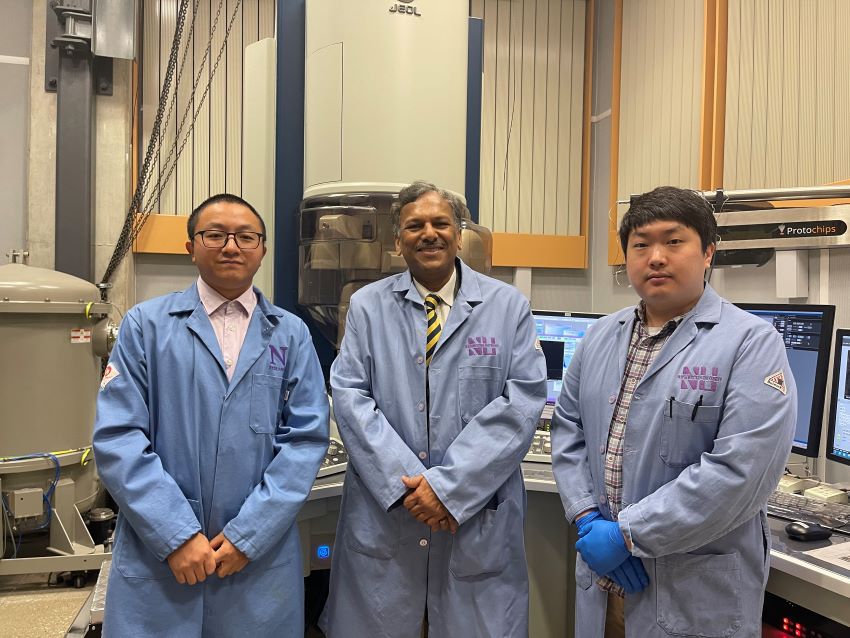NUANCE Research Published in Journal Science Advances

NUANCE Director Vinayak Dravid, together with Xiaobing Hu, co-corresponding author and a research associate professor within materials science and engineering department, and Kunmo Koo, first author and a research associate in the NUANCE Center, the Dravid research team developed a platform for gas cells using a membrane one-fifth as thick as commercially available microchips. This novel method to host gas molecules as they are being analyzed in real time, uses honeycomb structures found in nature as inspiration for an ultra-thin ceramic membrane.
Professor Dravid explains, "The thickness of the conventional membranes tends to be very large to maintain the mechanical integrity under the extremely high vacuum the microscope creates,” . . . . “Imagine I had to have very thick glasses that absorb a lot of light and, as a result, I don’t see much. The images we produced with our invention look almost like unfogging the glasses.”
With the new technique, researchers can see resolutions down to around 1.02 angstroms, compared to about 2.36 angstroms in previous experiments. The team said they’ve achieved the highest spatial resolution and spectral visibility recorded in their field to date!
Developing a method to analyze how things change with time, pressure and temperature and see how fluids interact with nanoparticles is critical to emerging clean energy and battery technologies at the molecular level. With this new advancement, applied technologies such as photovoltaics and catalytic energy systems can be better analyzed at the nano- and electronic length-scales.
Read more about this exciting breakthrough in a detailed article from Northwestern Now , as well as the published research in Science Advances online Journal!
